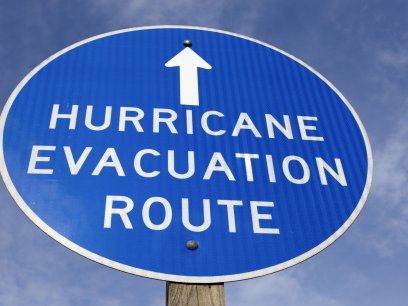
Are you one of the 24.6 million people living in the United States affected by asthma? More than 1,000 people are admitted to the hospital each day because of this chronic lung disease, which costs the nation around $56 billion each year in both direct costs such as hospitalizations and indirect costs including missed work days and decreased productivity. To educate the public on the disease, its management, and its triggers, people and organizations dedicated to asthma control and education recognize May as Asthma Awareness Month, this week as Air Quality Awareness Week, and today as World Asthma Day.
What is asthma? Who is impacted?
For people with asthma, certain stimuli, also called triggers, can cause the airways of the lungs to narrow or become blocked, making it hard or impossible to breathe. This disease is more prevalent in children, seen more often in women than men, and occurs more frequently among minorities.
The medical community does not yet know why some people are affected by this lung disease while others are not, and this issue is still being researched. However, while the underlying causes are unclear, the effects are significant: in 2021 alone (the most recent year for which CDC has published data), more than 3,500 people died from this disease, and each year several thousand more deaths have asthma cited as a contributing factor. More broadly, 2021 saw more than 9.8 million people suffer an asthma attack.
(Read more about Common Asthma Myths)
What's an asthma trigger?
Certain events or stimuli can trigger asthma symptoms in affected individuals—these catalysts are broadly called triggers, and while they vary for each individual, they can include exercise; respiratory infections; allergens such as pollen, mold, animal dander, and dust mites; occupational exposures; and air pollution.
The major asthma-inducing players in air pollution are particulate matter and ground-level ozone. Particulate matter includes particles such as those found in the air around a construction site, as well as particles that are so small they're invisible to the human eye—they measure about 1/30th the width of a human hair—which can get into the lungs, and may infiltrate the bloodstream and reach the heart, with the potential to cause decreased lung function, heart attacks, and even premature death.
These extra-small particles can come from smoke, or chemical reactions in pollutants from power plants, automobiles, and other industrial areas. The other major asthma-inducing air pollutant may not sound so bad—the planet relies on ozone for protection from the sun. However, that ozone layer is found in the stratosphere, which sits between 6 and 30 miles about the surface of the earth.
Ground-level ozone, on the other hand, is found in the troposphere, or the lowest layer of the atmosphere. This pollutant is generated by chemical reactions between other air pollutants, such as those emitted from industrial facilities, chemical solvents, and gasoline vapors, in the presence of sunlight. Breathing in ground-level ozone can lead to chest pain, coughing, and inflammation of the airways even in those who do not have asthma.
Asthma triggers and the weather
Certain types of weather events can have a significant impact on the concentration of asthma triggers found in the air. Generally speaking, high pressure systems, those associated with clear skies, concentrate more air molecules into a smaller space, which has the additional effect of keeping the atmosphere from mixing.
While this dynamic is what gives us sunny days, it also allows air pollutants to build up in the lower atmosphere, where they can be “baked” by the sun and form ground-level ozone. The air stagnates over the affected area, trapping particulate matter and ozone close to the ground, where they can affect the health of communities.
Low-pressure systems, those associated with cloudy days and rain, allow for air at the ground to rise up and mix with the rest of the atmosphere. Winds are produced, and pollutants can be blown away from an affected area or drawn up into the atmosphere away from the ground and the communities that live there. (However, not all low-pressure systems are good: there's a little-understood phenomenon known as “thunderstorm asthma,” which can make asthma symptoms far worse for some individuals.)
Controlling asthma symptoms
While some of these triggers can be controlled, such as keeping pets out of an affected individual's bedroom, for others, such as air quality, the best defense is information. Last month, the American Lung Association released its annual State of the Air report, which analyzes data from official air quality monitors to look for regional and local trends in air quality from year to year. You can look up your city or region using their report to find out about the ozone and particle pollution trends in your area during the past several years, or look at the association's report card for your state.
The association's report is a good place to start to learn more about the air quality in your area, but for more immediate information about what to expect for your local air quality day-to-day, look at the air quality index. Also called the AQI, this figure is calculated by the EPA and accounts for levels of pollutants in the air. This figure corresponds to a color that lets the public know whether the air outside is safe or a risk for certain populations, or the general public at large. Check the AQI when you check the weather in the morning to make sure you're prepared for whatever the day has to offer. This information can be found online at airnow.gov.
To help integrate information about environmental triggers of asthma into the general medical practice, NEEF works with medical school faculty (called faculty champions) to educate their peers and the next generation of health care practitioners about these important asthma stimuli, as well as how to work with their pediatric patients to control these triggers and better manage their health. To learn more about the program, check out this article in Clinical Pediatrics, or visit our asthma page.
Sources:
- CDC. 2021. “Asthma: Most Recent Asthma Data; National Current Asthma Prevalence (2021).” US DHHS. Accessed May 3. http://www.cdc.gov/asthma/most_recent_data.htm
- American Lung Association. 2016. “State of the Air 2016.” Accessed May 3. http://www.lung.org/our-initiatives/healthy-air/sota/
- Asthma and Allergy Foundation of America. 2016. “Cost of Asthma on Society.” Accessed May 3. http://www.aafa.org/page/cost-of-asthma-on-society.aspx
- CDC. 2013. Asthma Facts—CDC's National Asthma Control Program Grantees. Atlanta, GA: US DHHS. http://www.cdc.gov/asthma/pdfs/asthma_facts_program_grantees.pdf
- CDC. 2016. “Asthma: Most Recent Asthma Data; National Asthma Mortality (2014).” US DHHS. Accessed May 3. http://www.cdc.gov/asthma/most_recent_data.htm
- CDC. 2016. “Asthma: Most Recent Asthma Data; National Prevalence of Asthma Attacks (2014).” US DHHS. Accessed May 3. http://www.cdc.gov/asthma/most_recent_data.htm
- CDC. 2016. “May is Asthma Awareness Month.” US DHHS. Accessed May 3. http://www.cdc.gov/asthma/world_asthma_day.htm
- CDC National Asthma Control Program. [n.d.] America Breathing Easier. Atlanta, GA: US DHHS. http://www.cdc.gov/asthma/pdfs/breathing_easier_brochure.pdf
- CDC National Environmental Public Health Tracking. 2013. “Health Impacts of Fine Particles in Air.” US DHHS. Accessed April 16, 2020. https://ephtracking.cdc.gov/showAirHIA
- NOAA. 2008. “Stratospheric Ozone Monitoring and Research in NOAA; Science: Ozone Basics.” Accessed May 3, 2016. http://www.ozonelayer.noaa.gov/science/basics.htm
- US EPA. 2016. “Ozone Basics.” Accessed May 3. https://www.epa.gov/ozone-pollution/ozone-basics#effects
- US EPA. 2016. “Ozone Pollution.” Accessed May 3. https://www.epa.gov/ozone-pollution
- US EPA Office of Air and Radiation. 2016. “Particulate Matter (PM): Basic Information.” US EPA. Accessed May 3. https://www3.epa.gov/airquality/particlepollution/basic.html
- US EPA Office of Air and Radiation. 2016. “Particulate Matter (PM): Health.” US EPA. Accessed May 3. https://www3.epa.gov/airquality/particlepollution/health.html
- US EPA Office of Air Quality Planning and Standards. 2006. AQI Toolkit for Weathercasters. EPA-456/B-05-001. Research Triangle Park, NC: US EPA. https://www3.epa.gov/airnow/weathercasters/aqi-toolkit-weathercasters-part1.pdf


